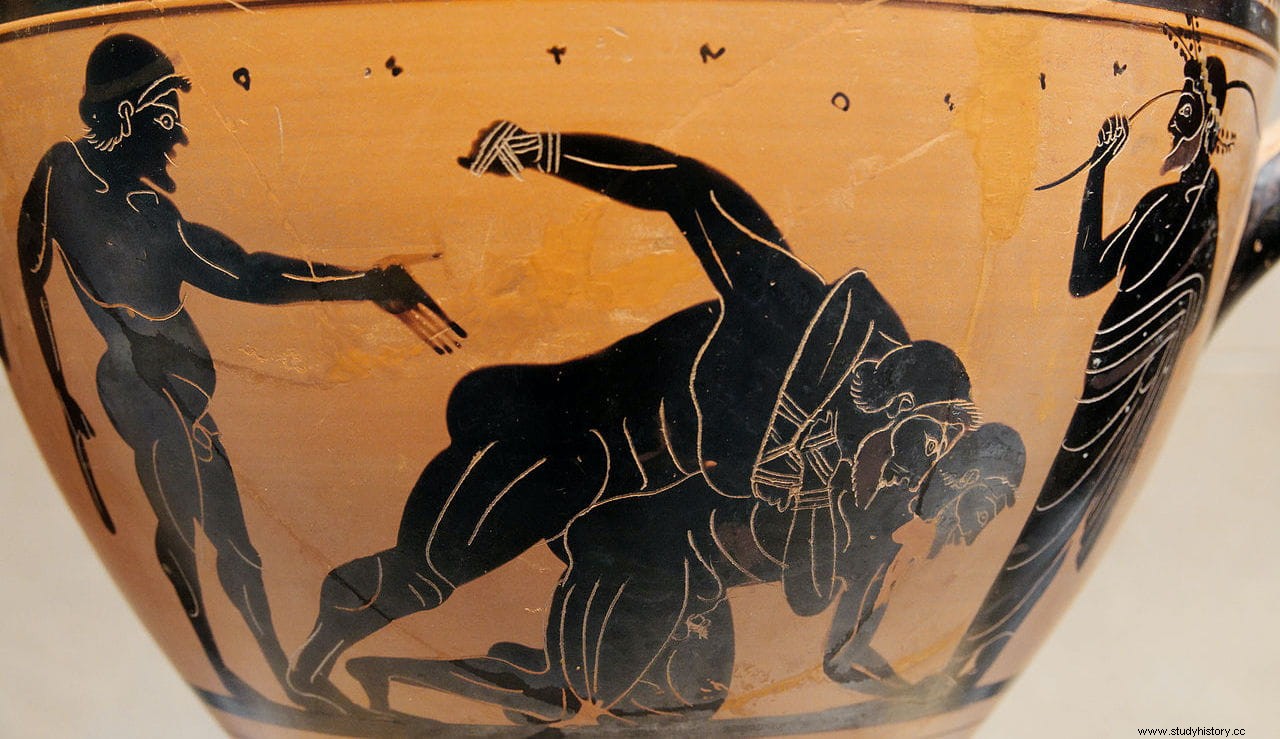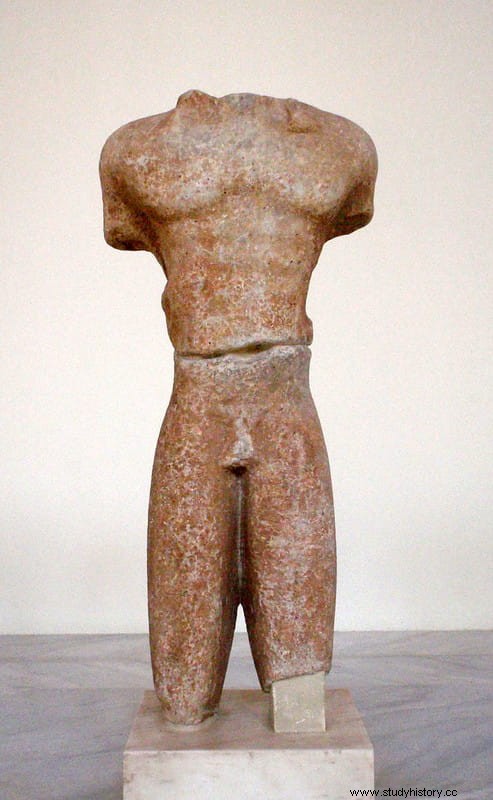The pancracy It was one of the most popular sports in ancient Greece, a type of combat that combined boxing with wrestling and other techniques such as strangulation or tripping. Actually, more or less, everything was allowed except biting and sticking your fingers in the opponent's eyes.
It was one of the highlights of the Olympic Games, with fights that could last for hours, since they only ended when one of the fighters surrendered, indicating by raising a finger.
One of the most famous pancracists was Arrachion, an athlete from Phigalia, a city in southwestern Arcadia. He had been champion in the 52nd and 53rd Olympiads in the years 572 and 568 BC. respectively. In the 54th, in the year 564 BC, he also played the final match, defending his title, against an opponent whose name has not been recorded.
At one point he manages to win Arraquión's back and initiates a chokehold around his neck. About to be defeated Arraquión hears his trainer haranguing him shouting what a noble epitaph, he was never defeated in Olympia! .

He finally manages to turn the other way, with a kick to his right leg as he throws his body to the left, twisting his foot and breaking one of his toes, inflicting such pain that he raises his finger in surrender. But during this Arrichion maneuver the other still keeps his neck strangled, which breaks from the sudden movement. Arrachion drops dead instantly. This is how Pausanias tells it in his Description of Greece (VIII, XL-12) :
As the opponent had raised his finger in surrender, the judges considered that the rest of the combat from that moment was no longer valid, and therefore Arraquión was the winner. In this way his corpse was crowned with the laurel of the winners and became the most mythical of all the pankration fighters of Antiquity.
Philostratus of Lemnos, describing a painting of the combat, tells it this way in the second book of his Images :

Pausanias also tells that in the Agora of Figalia he could see a statue of Arraquión:
That statue is now on display in the Olympia museum and is considered to be one of the oldest of all Olympic sculptures. Arraquión for his part represents the athletic ideal of victory or death .
